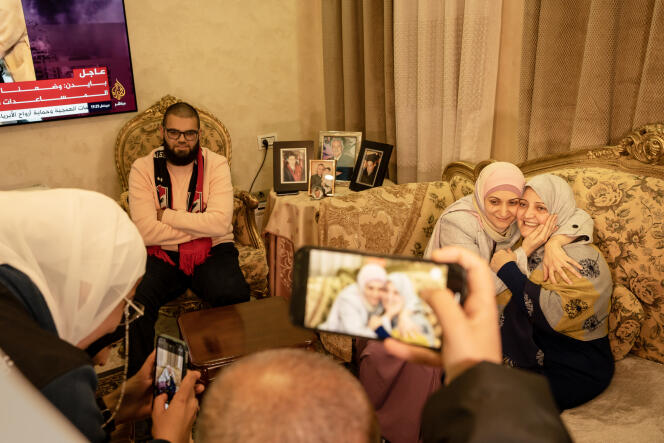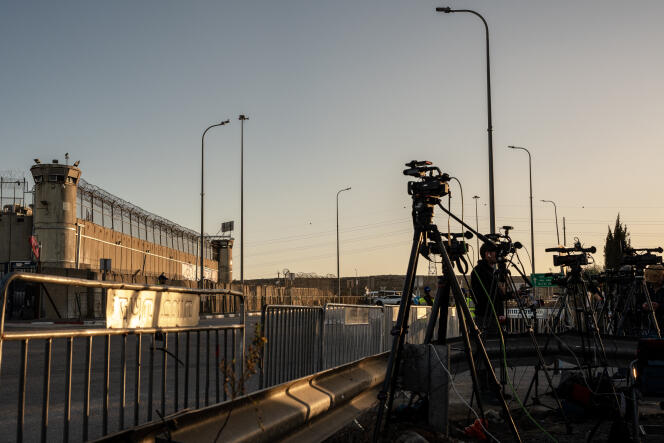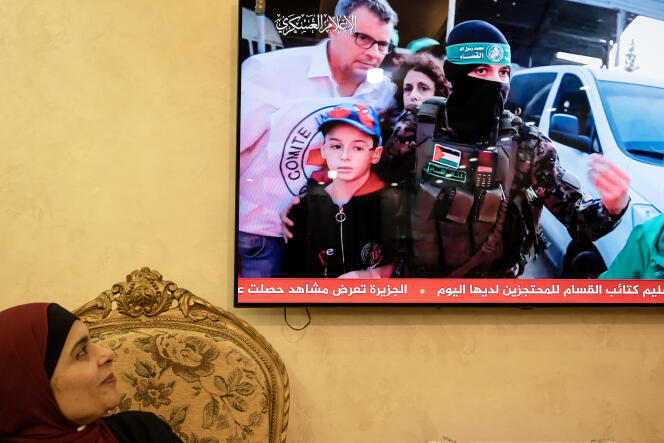


Even though it was strictly forbidden to take part in the festivities beyond the immediate family circle, there were still plenty of people in the living room of the Beit Hanina apartment in East Jerusalem. The uncle twirled around, Thermos flask in hand, handing out coffee in little cardboard cups, alongside his other brothers – nine in all – their sister and their children. They were trying not to speak loudly, they kept standing and sitting in big armchairs, shouting, pushing each other around, bursting out laughing. There were also two shy young boys who stood out in all the commotion, gazing intently at their mother, whom they discovered in elegant clothes and free. They had almost failed to recognize her. Amani Al-Hashim, mother, daughter, niece and prisoner for seven years, had finally returned home.
The 30-year-old was freed on Friday, November 24, as part of the swap of Palestinian prisoners – the first after the conflict triggered by the Hamas attack on October 7 – for Israeli hostages held in the Gaza Strip since then. A total of 39 prisoners (24 women and 15 minors) were released from Israeli jails on Friday. They were the first group, before others expected and hoped for the following days. Similar operations were due to continue over the next three days, on the basis of three prisoners for one hostage.


At around 8 pm on Friday, the first Palestinian detainees – none of whom, it had been claimed, had shed Israeli blood – were released after being regrouped in various places of detention, including Ofer prison, on the sinister Route 443 that shears through the West Bank, surrounded by barbed wire and the protective barrier wall. Ofer is technically in the West Bank, but administered by Israel.
The complex resembles a poorly maintained fortress. Released inmates were put into buses. In front of the detention center, a space was set aside for the press to observe this moment, but not to the extent of allowing any interactions to take place. In the context of Israel as a state still reeling in shock after the Hamas massacres, it was out of the question for the exchange between hostages and prisoners to be transformed into a political forum.
Some released prisoners would head for East Jerusalem, while others would go to the West Bank, to Bethlehem, Nablus, Ramallah and Beitunia, located a few kilometers as the crow flies from Ofer, but almost an hour away by road, so complicated are the zigzags of the barrier in this region.
Seven years ago, Al-Hashim had crashed her car into a military vehicle at the Kalandia checkpoint, one of the gateways between East Jerusalem and Ramallah, the headquarters of the Palestinian Authority. The circumstances remain unclear. The car was riddled with bullets, not her. She was subsequently sentenced to 10 years in prison. She was now given a three-year pardon.
You have 55% of this article left to read. The rest is for subscribers only.
